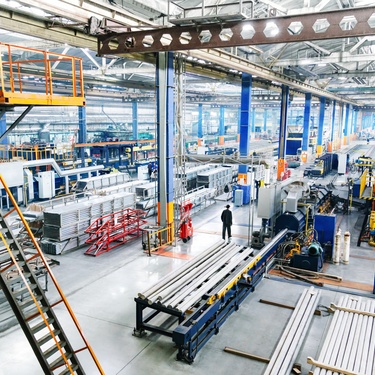
Reducing manufacturing costs is critical for improving profit margins and staying competitive. Whether you’re managing a large-scale facility or a smaller operation, streamlining expenses benefits your budget and overall efficiency. Below, we outline four ways to reduce manufacturing costs.
Identify Inefficiencies in Your Manufacturing Process
Finding inefficiencies in your workflow is one of the most effective methods to cut costs. Start by analyzing your processes from start to finish. Evaluate every step for potential delays or redundancies. For instance, look at how materials are moved and whether digital tools like manufacturing execution systems (MES) could optimize operations. Eliminating steps or automating repetitive tasks can significantly reduce unnecessary labor and waste.
Refining processes ensures all machinery and tools function at peak performance. Preventative maintenance schedules can eliminate downtime and costly emergency repairs, which often cause delays and added expenses. Optimized processes and well-maintained equipment create cost-efficient operations.
Reduce Compressed Air System Costs
Compressed air systems contribute significantly to energy expenses in manufacturing facilities. If mismanaged, this can become a major cost driver. Addressing inefficiencies can produce immediate savings.
Learn how to reduce your compressed air system costs by identifying energy leaks, properly maintaining equipment, and upgrading to energy-efficient systems when feasible. Regularly check for system leaks, adjust operating pressures to appropriate levels, and consider using variable-speed systems to better match air output with demand. These adjustments can lower energy consumption and reduce operating costs while ensuring reliable performance.
Optimize Raw Material Usage
Another way to reduce manufacturing costs is by leveraging resources more efficiently. Evaluate whether materials are being underutilized or overstocked. Modern inventory management systems can help you plan orders more accurately, reducing excess inventory and waste.
In addition, it is important to explore alternative suppliers or products with equivalent quality at competitive prices. Establish partnerships with vendors offering volume discounts or flexible packages. Negotiating contracts ensures the cost of raw materials aligns with your budget, supporting long-term savings.
Cross-Train Employees for Flexibility
Cross-training employees to work in multiple areas of the production line adds flexibility and minimizes downtime. When employees can handle different roles, you can adjust staffing levels as workload fluctuates without hiring additional team members.
This approach reduces the cost of overtime or covering absent employees while maintaining productivity. Additionally, a workforce skilled in various roles is less dependent on specialized positions, reducing the risk of delays caused by staff shortages.
Taking Control of Production Costs
Keeping manufacturing costs low doesn’t mean compromising on quality. Your business can remain competitive and safeguard profitability by taking the steps outlined in this guide. Implement these four ways to reduce manufacturing costs, and make measurable improvements across your operations.
Bio: Casey is a passionate copyeditor highly motivated to provide compelling SEO content in the digital marketing space. Her expertise includes a vast range of industries from highly technical, consumer, and lifestyle-based, with an emphasis on attention to detail and readability.




















